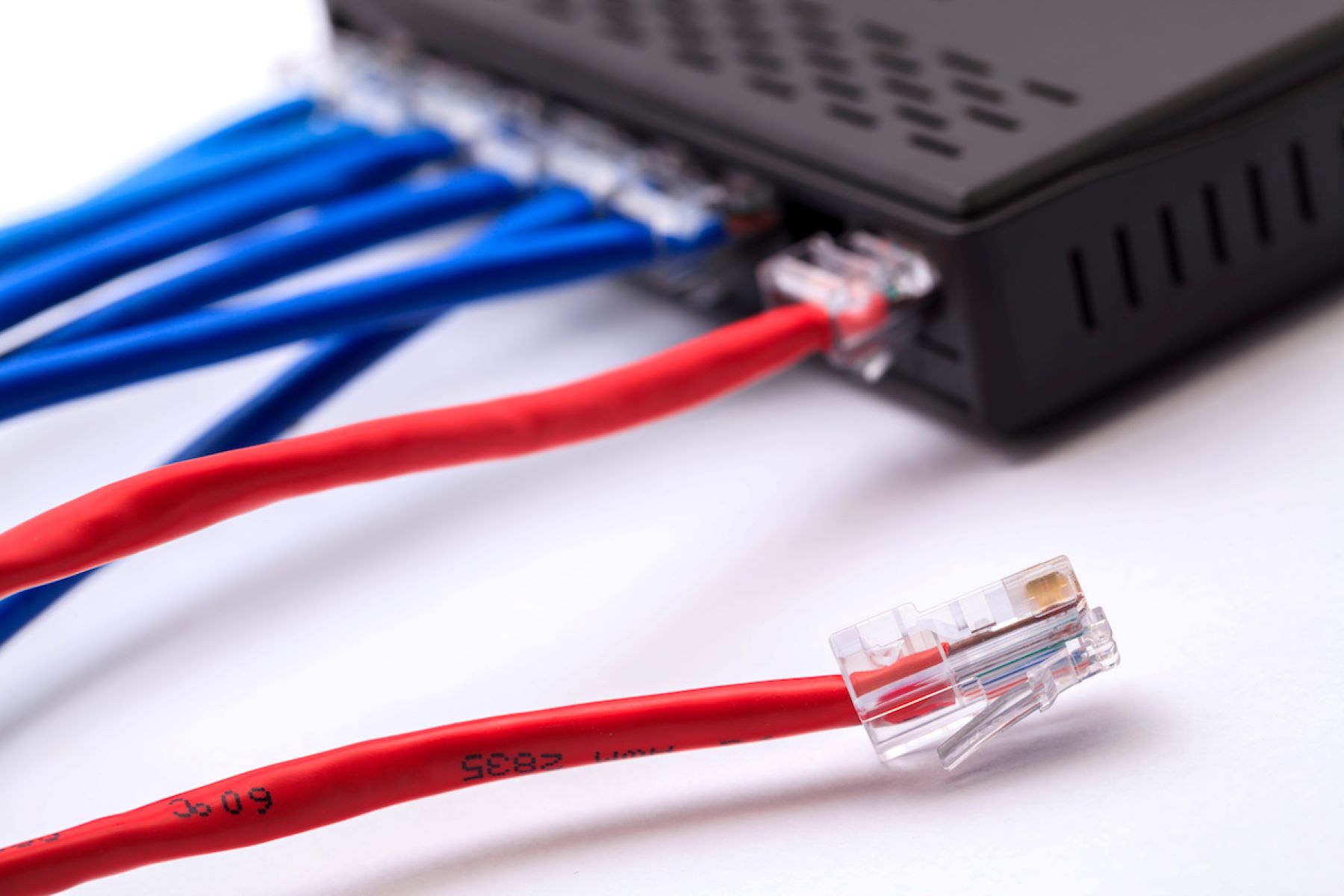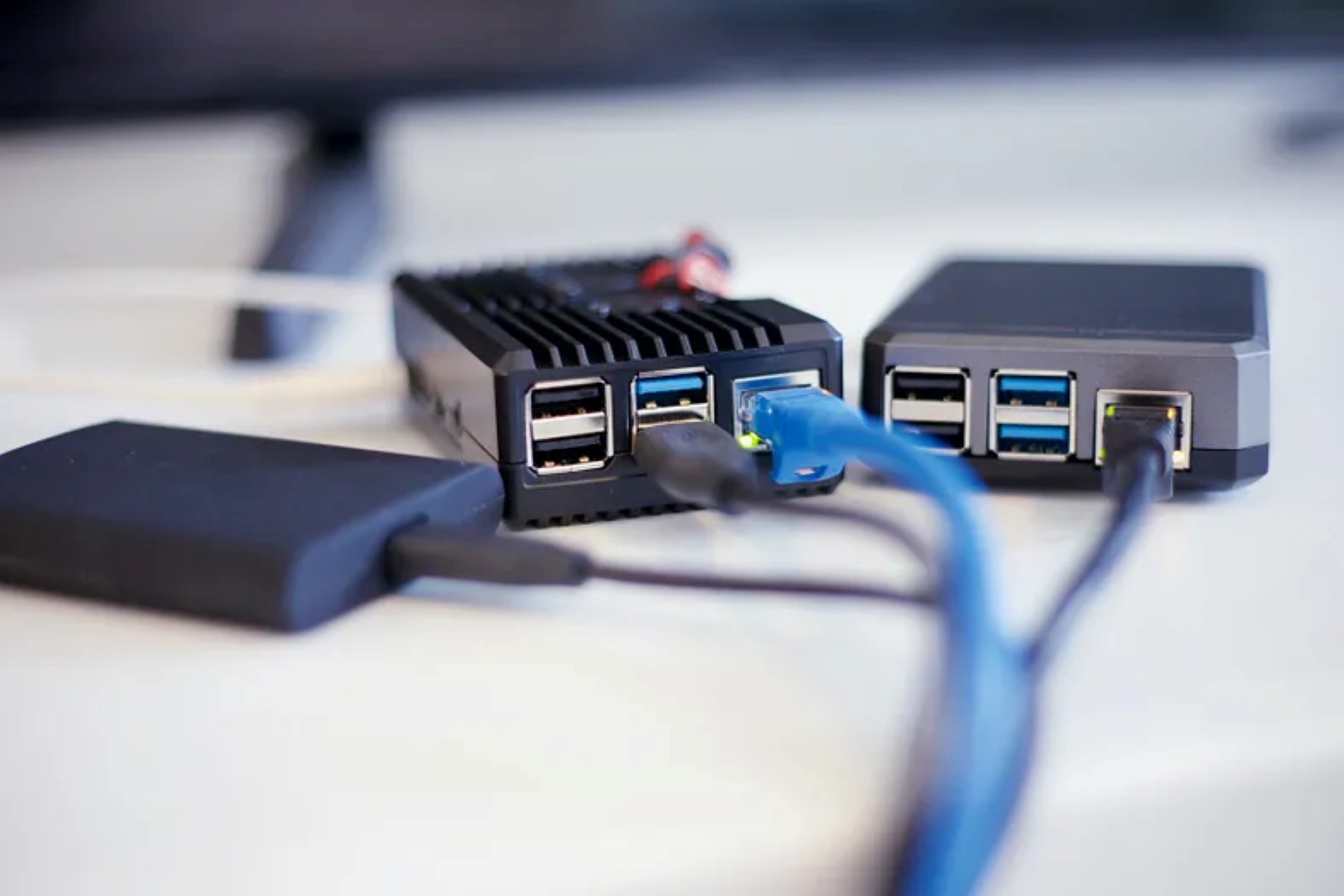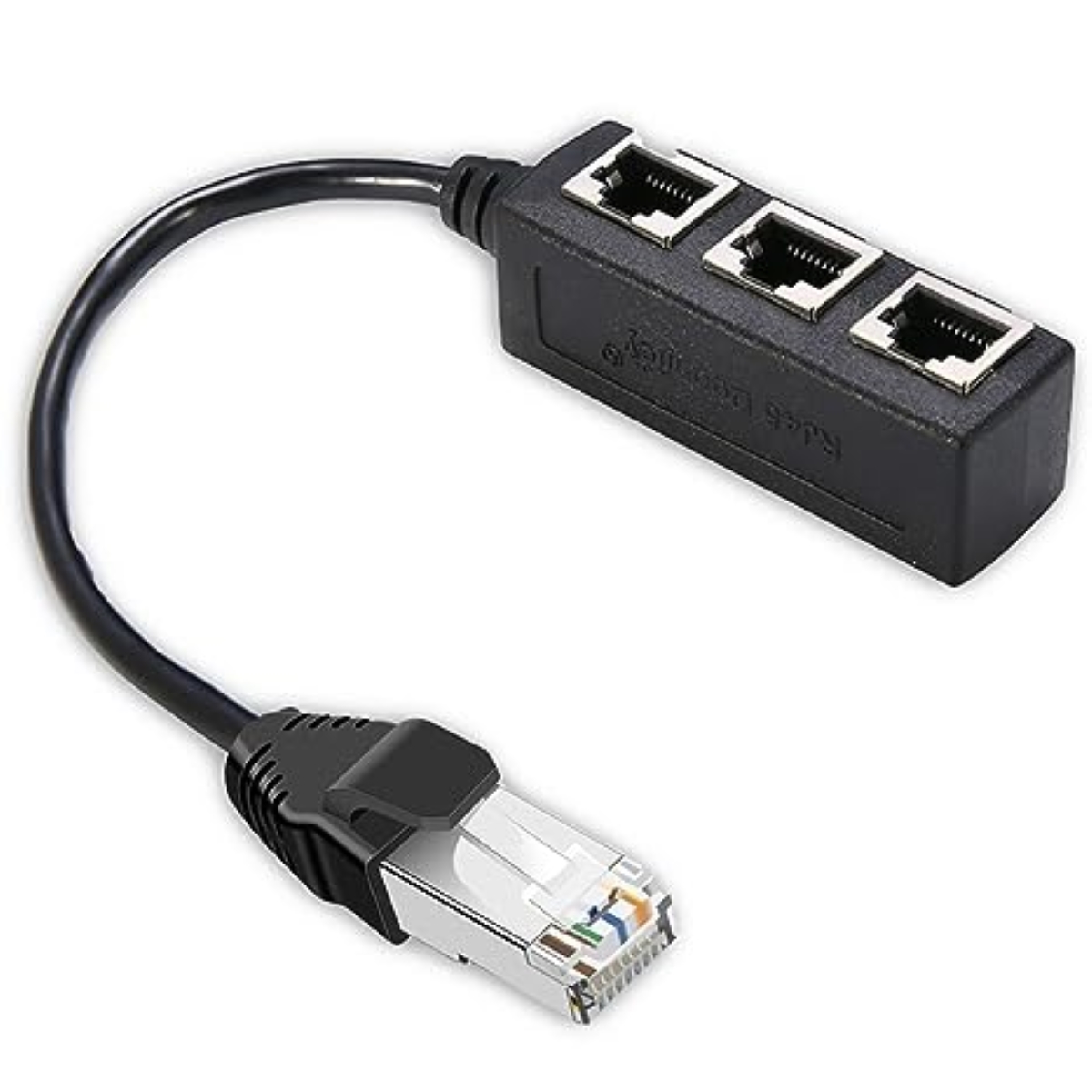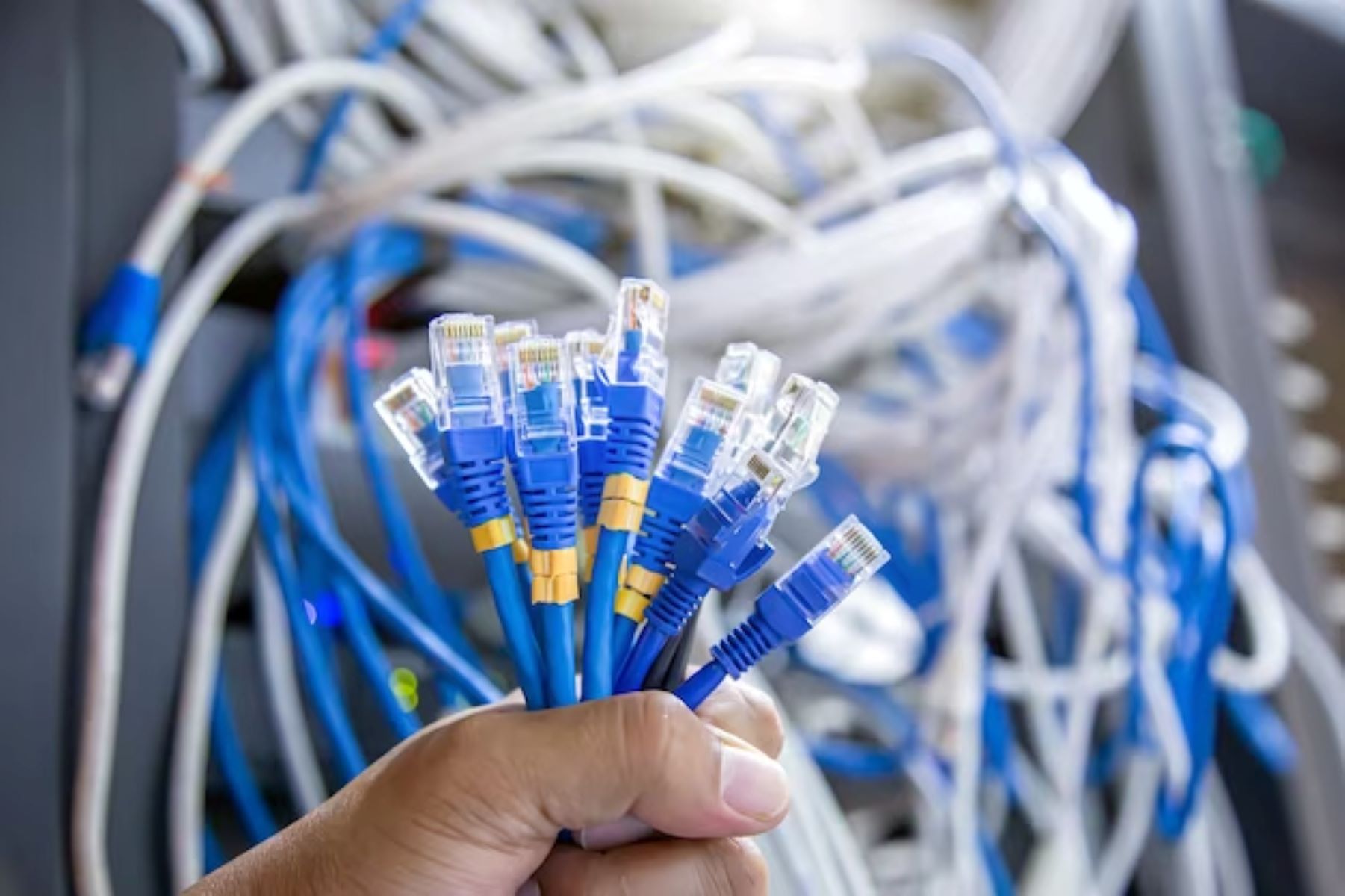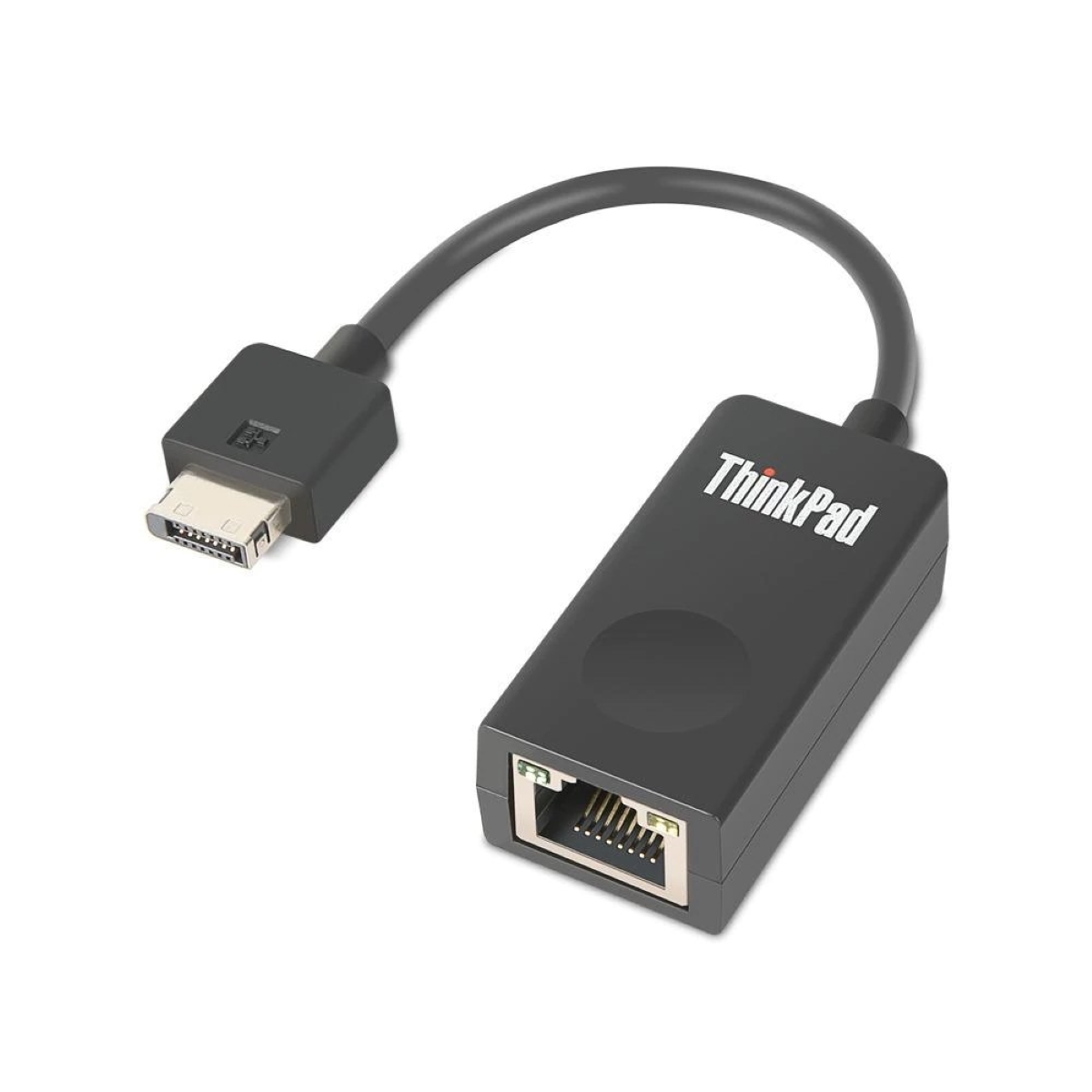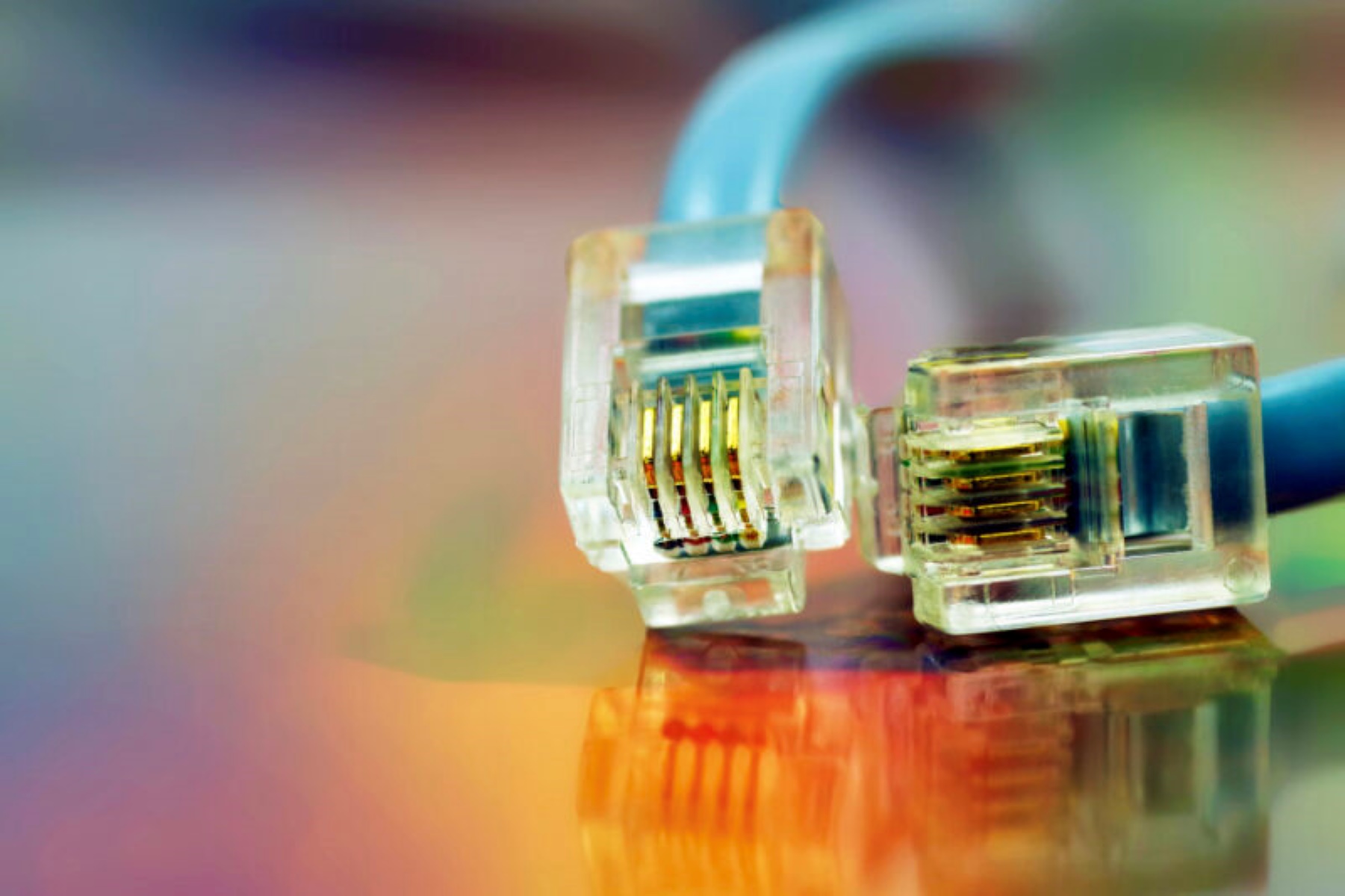Introduction
Welcome to the world of Ethernet networks! In today’s digital age, where connectivity plays a crucial role in our personal and professional lives, understanding the basics of networking is essential. Ethernet networks, in particular, have become the de facto standard for local area networks (LANs) worldwide.
Ethernet networks allow devices, such as computers, smartphones, and printers, to communicate and share information with one another. Whether you’re streaming a movie, collaborating on a project, or simply browsing the internet, chances are you’re relying on an Ethernet network to stay connected.
This article will dive into the fundamental aspects of Ethernet networks, including how they work, their components, cable types, speeds, standards, topologies, switches, routers, and security measures. By the end of this article, you’ll have a comprehensive understanding of Ethernet networks, enabling you to navigate the world of networking with confidence.
So, let’s embark on this journey to unravel the mysteries of Ethernet networks!
What is Ethernet Network?
An Ethernet network, also known as an Ethernet LAN (Local Area Network), is a type of computer network that uses Ethernet cables to connect devices and enables them to share data and resources. Ethernet networks are widely used in both residential and business settings due to their reliability, relatively low cost, and high-speed data transfer capabilities.
At its core, an Ethernet network consists of two main components: network devices and Ethernet cables. Network devices can include computers, servers, switches, routers, printers, and other network-enabled devices. These devices are connected to one another using Ethernet cables, which transmit data packets between them.
An Ethernet network follows a client-server model, where one device acts as the server and others act as clients. The server device hosts shared resources, such as files or a printer, while the client devices access and utilize these resources.
Ethernet networks operate using the Ethernet protocol, a set of rules and standards that govern how data is transmitted over the network. This protocol makes use of Carrier Sense Multiple Access with Collision Detection (CSMA/CD) to manage the sharing of the network’s bandwidth and handle any potential data collisions that may occur when multiple devices attempt to transmit data simultaneously.
One of the defining features of Ethernet networks is their scalability. They can be easily expanded by adding additional network devices, such as switches, to accommodate growing network requirements. Ethernet networks also support various network topologies, including star, bus, and ring configurations.
Overall, Ethernet networks provide a reliable and efficient means of connecting devices within a local area. Whether it’s transferring files, printing documents, or accessing the internet, Ethernet networks play an integral role in facilitating seamless communication and collaboration between devices.
How Does Ethernet Network Work?
Understanding how an Ethernet network works is essential for grasping the underlying mechanisms behind its efficient data transfer capabilities. At its core, an Ethernet network follows a set of protocols and standards that govern how data is transmitted and received.
In an Ethernet network, data is transferred in the form of packets. These packets contain the information being sent from one device to another. When a device wants to send data, it breaks it down into smaller packets and attaches the necessary information, such as the destination address.
When the packet is ready, it is transmitted over the Ethernet cable using electrical signals. This is where the concept of bits, bytes, and bandwidth comes into play. The electrical signals represent bits, which are the smallest unit of data in a computer system. A group of eight bits forms a byte.
As the packet travels over the Ethernet cable, other devices connected to the network listen for traffic and only transmit when the network is not busy. This is known as Carrier Sense Multiple Access with Collision Detection (CSMA/CD). If two devices transmit data at the same time, a collision occurs, and both devices pause for a random duration before attempting to transmit again. This ensures that data is transmitted in an orderly and efficient manner.
Once the packet reaches its destination device, it is processed and reassembled to recreate the original data. The destination device checks if the packet is intact and if it has reached the correct destination by examining the destination address. If all is well, the data is made available to the recipient application or user.
Ethernet networks operate at different speeds, commonly referred to as the bandwidth. The most common Ethernet speeds include 10 Mbps (megabits per second), 100 Mbps, 1 Gbps (gigabit per second), and 10 Gbps. Higher speeds allow for faster data transfer rates, enabling a more efficient network experience.
In summary, Ethernet networks operate by breaking data into packets and transmitting them over the network using electrical signals. Devices connected to the network listen for traffic, manage collisions, and ensure data reaches its intended destination. By employing these protocols and standards, Ethernet networks provide a reliable and efficient means of data communication among connected devices.
Types of Ethernet Networks
Ethernet networks come in different variations, each designed to meet specific requirements and cater to different scenarios. Let’s explore some of the common types of Ethernet networks:
- Ethernet over copper: This is the most common type of Ethernet network used in offices, homes, and small businesses. It utilizes twisted pair copper cables to transmit data signals. Ethernet over copper is cost-effective, easy to install, and supports speeds ranging from 10 Mbps to 10 Gbps.
- Ethernet over fiber: Ethernet over fiber networks use fiber optic cables instead of copper wiring. Fiber optic cables offer higher data transfer speeds, greater bandwidth capacity, and are resistant to electromagnetic interference. Ethernet over fiber is commonly used in enterprise networks and long-distance connections where speed and reliability are crucial.
- Ethernet over coaxial cable: This type of Ethernet network uses coaxial cables, which are commonly associated with cable television installations. Coaxial cable-based Ethernet networks provide moderate speeds and are often found in residential environments.
- Power over Ethernet (PoE): Power over Ethernet networks deliver both data and electrical power over a single Ethernet cable. This eliminates the need for separate power cables, making it ideal for devices such as IP cameras, wireless access points, and VoIP phones. PoE simplifies installation and reduces costs by providing power and connectivity through a single cable.
- Industrial Ethernet: Industrial Ethernet networks are designed to operate in harsh environments typically found in industrial settings. These networks include features like ruggedized cables, IP67-rated connectors for protection against dust and moisture, and enhanced resilience to withstand extreme temperature fluctuations and electromagnetic interference.
It’s important to select the appropriate type of Ethernet network based on factors such as speed requirements, distance limitations, environmental conditions, and budget constraints. By carefully considering these factors, you can ensure that your Ethernet network meets the specific needs of your application, whether it’s in a home, office, or industrial setting.
Advantages of Ethernet Networks
Ethernet networks offer numerous advantages that make them a popular choice for connecting devices in various environments. Let’s explore some of the key advantages of Ethernet networks:
- High Speed and Efficiency: Ethernet networks provide high-speed data transfer rates, allowing for fast and efficient communication between devices. Whether you’re downloading files, streaming media, or accessing online resources, Ethernet networks deliver quick and reliable data transmission.
- Scalability: Ethernet networks are highly scalable, meaning that additional devices can be easily added to the network without significant disruption. This flexibility allows for seamless expansion as your network requirements grow.
- Compatibility: Ethernet networks have excellent compatibility with various devices and operating systems. From computers and printers to smart home devices and IoT devices, Ethernet networks can seamlessly connect different types of devices regardless of their platforms.
- Reliability: Ethernet networks offer high levels of reliability and stability. The use of twisted pair or fiber optic cables ensures minimal signal degradation, reducing the chances of network disruptions. This reliability is crucial for applications requiring constant connectivity, such as online gaming, video conferencing, and real-time data streaming.
- Cost-Effective: Ethernet networks are cost-effective compared to other networking technologies. Ethernet cables are relatively inexpensive and widely available. Additionally, Ethernet switches, routers, and other network equipment are competitively priced, making Ethernet networks an affordable option for businesses and homes.
- Easy Installation and Maintenance: Setting up an Ethernet network is straightforward, even for those with limited technical expertise. Ethernet cables are simple to install, and network devices can be easily connected and configured. Regular maintenance tasks, such as troubleshooting and updating firmware, can also be performed without extensive technical knowledge.
- Support for Various Applications: Ethernet networks are versatile, capable of supporting a wide range of applications. Whether it’s data transfer, multimedia streaming, VoIP telephony, video surveillance, or cloud computing, Ethernet networks can handle the diverse requirements of modern digital environments.
Overall, Ethernet networks provide a reliable, efficient, and cost-effective solution for connecting devices and facilitating seamless communication and data transfer. With their high speed, scalability, compatibility, and stability, Ethernet networks continue to be the go-to choice for both residential and commercial networking needs.
Disadvantages of Ethernet Networks
While Ethernet networks offer numerous advantages, it’s important to consider their limitations and potential drawbacks. Here are some of the disadvantages of Ethernet networks:
- Physical Limitations: Ethernet networks have distance limitations. The maximum distance that Ethernet signals can travel without the use of additional equipment is typically around 100 meters. Beyond this distance, signal degradation may occur. Extending the reach of Ethernet networks over long distances requires the use of repeaters or fiber optic cables.
- Cable Infrastructure: Ethernet networks rely on physical cabling, which can be cumbersome to install, especially in existing structures. Retrofitting buildings with Ethernet cabling can be challenging and may require drilling holes or running cables through walls and ceilings. This can be time-consuming and disruptive.
- Network Congestion: In highly congested networks, where numerous devices are competing for bandwidth, Ethernet networks can experience performance degradation. Increased network traffic can lead to slower data transfer speeds and increased latency, affecting the overall network performance.
- Security Vulnerabilities: Ethernet networks are vulnerable to security breaches if not properly secured. Unauthorized devices or users on the network can potentially access sensitive data or disrupt network operations. Implementing security measures such as firewalls, encryption, and access controls is crucial to mitigate these risks.
- Single Point of Failure: In traditional Ethernet networks, if the central switch or router fails, the entire network can be affected. This single point of failure can lead to complete network downtime until the issue is resolved or backup systems are activated. Redundant network infrastructure and failover mechanisms can help address this concern.
- Limited Bandwidth for Shared Networks: In scenarios where multiple devices are sharing limited bandwidth, such as in a busy office environment, Ethernet networks may face bandwidth limitations. This can result in reduced network performance and slower data transfer speeds.
Despite these disadvantages, Ethernet networks remain a widely adopted and reliable networking solution. Many of these limitations can be mitigated with proper network planning, regular maintenance, and the implementation of the appropriate network infrastructure to meet specific requirements.
Ethernet Network Components
An Ethernet network is made up of several key components that work together to enable communication and data transfer between devices. Understanding these components is essential for building and maintaining an Ethernet network. Let’s explore the essential components of an Ethernet network:
- Network Interface Card (NIC): The network interface card, also known as a network adapter, is a hardware component that enables a device to connect to an Ethernet network. It is responsible for translating and transmitting data between the device and the network.
- Ethernet Cables: Ethernet cables are the physical connections that carry data signals between network devices. The most commonly used Ethernet cables are Cat5e, Cat6, and Cat6a. These cables come in various lengths and are terminated with connectors, such as RJ-45 connectors, at each end.
- Switches: Ethernet switches are responsible for connecting multiple devices within a network. They receive data packets and forward them to the appropriate device based on the destination address. Switches provide efficient data transfer and improve network performance by reducing collisions and providing dedicated bandwidth for each connected device.
- Routers: Routers are essential components for connecting multiple Ethernet networks together. They determine the most efficient path for data packets to travel from one network to another. Routers can connect Ethernet networks with other types of networks, such as wireless networks or the internet.
- Modems: Modems are used to connect Ethernet networks to the internet or other wide-area networks (WANs). They convert the digital signals used by Ethernet networks into signals that can be transmitted over analog telephone lines or other types of WAN connections.
- Network Hubs: Network hubs are older devices that were commonly used to connect Ethernet devices. However, hubs operate at half-duplex, meaning they can only transmit or receive data at a time, leading to increased network congestion and reduced performance. Switches have largely replaced hubs in modern Ethernet networks.
- Network Servers: Network servers play a vital role in Ethernet networks. They provide services and resources such as file storage, email, databases, and web hosting. These servers are accessed by other devices on the network to share and access data and services.
These components work together, creating a network infrastructure that enables devices to communicate and share information effectively. Understanding how each component operates and how they interact is crucial for building and maintaining a reliable and efficient Ethernet network.
Ethernet Cable Types
Ethernet cables are the lifeline of any Ethernet network, carrying data signals between devices with speed and reliability. There are several types of Ethernet cables, each with its own characteristics and performance capabilities. Let’s explore some commonly used Ethernet cable types:
- Cat5e Cable: Cat5e (Category 5e) cables are widely used in Ethernet networks. They support data transfer speeds of up to 1 Gbps and are suitable for most residential and small business network applications. Cat5e cables utilize twisted pair copper wires and are backward compatible with older Ethernet standards.
- Cat6 Cable: Cat6 (Category 6) cables offer improved performance compared to Cat5e cables. They have tighter twisting and reduced signal interference, allowing for data transfer speeds of up to 10 Gbps over short distances. Cat6 cables are commonly used in demanding environments such as large offices, data centers, and multimedia streaming.
- Cat6a Cable: Cat6a (Category 6a) cables provide enhanced performance and bandwidth compared to Cat6 cables. They are designed to support data transfer speeds of up to 10 Gbps over longer distances, thanks to improved insulation and shielding. Cat6a cables are commonly used in environments where higher bandwidth and network reliability are crucial, such as enterprise networks and data centers.
- Fiber Optic Cable: Fiber optic cables are a type of Ethernet cable that use thin glass or plastic fibers to transmit data as pulses of light. Fiber optic cables offer extremely high data transfer speeds and are immune to electromagnetic interference. They are commonly used in long-distance Ethernet connections and environments where high speed, noise immunity, and security are essential.
- Coaxial Cable: Coaxial cables are commonly associated with cable television installations but can also be used for Ethernet connections. These cables consist of a central conductor, insulation, shielding, and an outer jacket. Coaxial cables are suitable for shorter Ethernet runs with lower bandwidth requirements, primarily in residential settings.
The choice of Ethernet cable type depends on factors such as the required data transfer speed, distance, environmental conditions, and budgetary constraints. It’s important to select the appropriate cable type to ensure optimal network performance and reliability.
When installing Ethernet cables, it’s also essential to follow proper installation practices, such as minimizing cable bends, avoiding sharp twists, and providing proper cable management. This helps maintain signal integrity and prevents cable damage that can lead to performance degradation.
Overall, Ethernet cables are the backbone of any Ethernet network, facilitating fast and reliable data transmission. Understanding the different cable types and their capabilities allows network administrators to choose the most suitable option for their specific networking needs.
Ethernet Network Speeds
Ethernet networks offer various speeds, allowing for efficient data transfer and meeting the demands of different applications and network environments. Ethernet network speeds are commonly expressed in bits per second (bps) or multiples of bits per second, such as kilobits per second (Kbps), megabits per second (Mbps), and gigabits per second (Gbps). Let’s explore some of the commonly used Ethernet network speeds:
- 10 Mbps (Ethernet): 10 Mbps Ethernet was the original Ethernet standard and is still used in some legacy systems. While it may seem slow compared to newer standards, it is sufficient for basic internet browsing and low-bandwidth applications.
- 100 Mbps (Fast Ethernet): Fast Ethernet, also known as 100Base-T, provides 100 Mbps data transfer speeds. It offers ten times the speed of 10 Mbps Ethernet and enables faster file transfers and smoother multimedia streaming. Fast Ethernet is commonly used in small to medium-sized businesses and home networks.
- 1 Gbps (Gigabit Ethernet): Gigabit Ethernet, or 1000Base-T, offers data transfer speeds of 1 Gbps, which is a significant increase in speed compared to Fast Ethernet. Gigabit Ethernet is widely adopted, supporting higher bandwidth requirements and providing faster data transfers, making it suitable for data-intensive applications such as video editing, high-definition media streaming, and large file transfers.
- 10 Gbps (10 Gigabit Ethernet): 10 Gigabit Ethernet, or 10GbE, delivers data transfer speeds of 10 Gbps, making it a powerful option for high-performance network environments. 10GbE is commonly used in data centers, enterprise networks, and for interconnecting switches and routers. It enables high-speed data transfer for bandwidth-intensive applications, virtualization, and cloud computing.
- 40 Gbps and 100 Gbps: With the evolution of technology and increasing demands for higher bandwidth, Ethernet has further advanced to support even higher speeds. 40 Gbps and 100 Gbps Ethernet offer substantial bandwidth for data centers and networking infrastructure that require ultra-fast speeds for large-scale data processing, high-performance computing, and advanced applications.
It’s important to note that the actual data transfer speeds achieved may vary due to factors such as network congestion, cable quality, and the performance capabilities of network devices. Additionally, the speed of an Ethernet network is limited by the slowest component in the network.
When selecting an Ethernet network speed, it’s crucial to consider the requirements of your applications and the capabilities of your network devices. Choosing the appropriate Ethernet speed ensures that your network can handle current and future demands, providing a smooth and efficient data transfer experience.
Ethernet Network Standards
Ethernet networks adhere to specific standards that define the protocols, physical characteristics, and data transfer rates used in the network. These standards ensure interoperability and compatibility between network devices. Let’s explore some of the commonly used Ethernet network standards:
- IEEE 802.3: The IEEE 802.3 standard is the foundation of Ethernet networks and defines the basic operation and protocols used. It specifies the physical layer characteristics, such as the types of cables and connectors, as well as the data link layer protocols for data transmission.
- 10BASE-T: 10BASE-T is an Ethernet standard that operates at a speed of 10 Mbps over twisted pair copper cables. It uses the CSMA/CD (Carrier Sense Multiple Access with Collision Detection) protocol for managing data transmission and collision detection.
- 100BASE-T: 100BASE-T, also known as Fast Ethernet, is an Ethernet standard that operates at a speed of 100 Mbps over twisted pair copper cables. It provides ten times the speed of 10BASE-T Ethernet while maintaining backward compatibility.
- 1000BASE-T: 1000BASE-T, commonly known as Gigabit Ethernet, is an Ethernet standard that operates at a speed of 1 Gbps over twisted pair copper cables. It provides significantly higher data transfer rates compared to Fast Ethernet, enabling faster file transfers and multimedia streaming.
- 10GBASE-T: 10GBASE-T is an Ethernet standard that supports data transfer speeds of 10 Gbps over copper cables, specifically Cat6a or Cat7 cables. It allows for high-speed networking in environments where fiber optic cables may not be practical or cost-effective.
- IEEE 802.3bz: Also known as 2.5GBASE-T and 5GBASE-T, IEEE 802.3bz is an Ethernet standard that supports data transfer speeds of 2.5 Gbps and 5 Gbps over Cat5e or Cat6 cables. It provides an intermediate option between Gigabit Ethernet and 10 Gigabit Ethernet, allowing for faster data transfer without requiring extensive cable upgrades.
- IEEE 802.3ae: IEEE 802.3ae is an Ethernet standard that defines 10 Gigabit Ethernet (10GbE) data transfer speeds over fiber optic cables. It provides high-speed networking capabilities for data centers, enterprise networks, and other applications requiring exceptionally fast data transfers.
Ethernet network standards are continuously evolving as technology advances and demands for faster and more reliable networking increase. It’s important to consider the specific standards supported by your network devices to ensure compatibility and optimal performance.
By adhering to Ethernet network standards, organizations and individuals can benefit from a standardized, interoperable, and scalable network infrastructure that meets their current and future networking needs.
Ethernet Network Topologies
Ethernet networks can be structured and interconnected in various topologies, or layouts, which determine how devices are connected and how data flows within the network. Each topology has its own advantages and considerations. Let’s explore some common Ethernet network topologies:
- Star Topology: In a star topology, all devices in the network are connected to a central device, typically a switch. Each device has a dedicated connection to the central switch, forming a star-like structure. The central switch facilitates communication between devices by forwarding data packets to the intended recipient. The star topology offers easy scalability, as devices can be added or removed without impacting the entire network.
- Bus Topology: In a bus topology, devices are connected in a linear fashion along a single communication line, called the bus or backbone. Each device taps into the bus and shares the same network medium, such as coaxial or Ethernet cable. Data transmitted by any device is received by all devices on the network. However, only the intended recipient processes the data. Bus topologies are simple and inexpensive but can be prone to collisions and have limited scalability.
- Ring Topology: In a ring topology, devices are connected in a closed loop, forming a ring. Data is transmitted in a sequential manner from one device to the next until it reaches the intended recipient. Each device acts as a relay, forwarding the data to the next device. Ring topologies provide effective data transfer and are relatively easy to implement, but network disruptions can occur if one device fails.
- Mixed Topology: A mixed topology combines multiple topologies within the same network. For example, a network may have a star topology in one area and a bus topology in another. Mixed topologies offer flexibility to accommodate different networking needs within a single network infrastructure. However, they can be more complex to manage and maintain.
Each Ethernet network topology has its own advantages and considerations. Factors such as network size, device connectivity, scalability, fault tolerance, and cost should be taken into account when selecting a topology for a specific network environment.
It’s also worth noting that modern Ethernet networks often use a hybrid approach, combining different topologies to meet specific requirements. This can involve utilizing switches to create star topologies within a larger network or implementing redundancy measures to enhance fault tolerance.
Overall, Ethernet network topologies provide a framework for organizing devices and data flow within a network. By understanding the various topologies available, network administrators can design efficient, scalable, and reliable Ethernet networks that meet the demands of their specific applications and environments.
Ethernet Network Switches
Ethernet network switches play a critical role in connecting devices within a network and facilitating efficient data transfer. These intelligent devices enable multiple devices to communicate simultaneously while minimizing network congestion. Let’s explore the key features and benefits of Ethernet network switches:
Functionality: Ethernet switches operate at the data link layer (Layer 2) of the OSI model. They receive data packets from connected devices and forward them to the appropriate destination based on the MAC (Media Access Control) address of each device. This process is known as switching, which allows for data to be transmitted only to the intended recipient, improving network efficiency.
Elimination of Network Collisions: Unlike older network hubs, switches create separate collision domains for each device connected to them. This means that two devices can transmit data simultaneously without causing collisions. This separation improves network performance by minimizing data collisions and reducing network congestion.
Improved Bandwidth and Performance: Ethernet switches provide dedicated bandwidth for each connected device. Each device has its own dedicated communication path to the switch, ensuring that it can utilize the maximum available bandwidth. This improves network performance, especially in environments where multiple devices require high-speed data transfers.
Flexibility and Scalability: Ethernet switches offer flexibility in terms of network expansion. Additional devices can be easily connected to the switch, allowing for seamless scalability as the network grows. Switches typically come with different port configurations, such as 8, 16, 24, or 48 ports, catering to various networking needs.
VLAN Support: Virtual Local Area Networks (VLANs) are implemented through switches to logically divide a physical network into multiple virtual networks. This allows for improved network security, easier network administration, and more efficient use of network resources. VLAN support on switches enables the segregation and isolation of network traffic for enhanced control and management.
Network Monitoring and Management: Ethernet switches often provide features for network monitoring and management. Network administrators can monitor network traffic, detect and troubleshoot connectivity issues, and configure various settings through a management interface. These capabilities allow for better network control and ensure optimal network performance.
Quality of Service (QoS) Prioritization: Switches can prioritize certain types of network traffic, such as video conferencing or VoIP (voice over IP) calls, by implementing Quality of Service (QoS) technologies. QoS prioritization ensures that essential network traffic receives preferential treatment, minimizing latency and ensuring the smooth performance of critical applications.
Ethernet network switches are available in various types, including unmanaged switches, which offer plug-and-play functionality without advanced configuration options, and managed switches, which provide more extensive control and customization capabilities. The choice of switch type depends on the specific networking requirements and level of network management desired.
In summary, Ethernet network switches are essential components that enhance network performance, improve bandwidth utilization, and enable efficient communication among devices. Their ability to eliminate collisions, provide dedicated bandwidth, and support advanced features make them indispensable for building reliable and high-performing Ethernet networks.
Ethernet Network Routers
Ethernet network routers are crucial components that play a vital role in interconnecting multiple Ethernet networks or connecting an Ethernet network to the internet. These devices facilitate data routing, allowing information to flow between networks and directing traffic to the appropriate destinations. Let’s explore the key features and benefits of Ethernet network routers:
Network Interconnection: Ethernet network routers connect multiple Ethernet networks, enabling devices on different networks to communicate with each other. They determine the most efficient path for data packets to travel, ensuring that information reaches its intended destination.
Internet Connectivity: Routers are essential for connecting Ethernet networks to the internet. They facilitate communication between the local network and external networks, such as the internet, by forwarding data packets to the appropriate destination network.
IP Address Management: Routers assign unique IP (Internet Protocol) addresses to devices connected to the network. IP addresses identify each device on the network and play a crucial role in directing data packets to the correct recipient.
Traffic Segregation: Routers can separate network traffic into different subnets or VLANs (Virtual Local Area Networks), allowing for enhanced security, improved network management, and optimized traffic flow. Segregating traffic improves network performance and prevents unwanted access to sensitive data.
NAT (Network Address Translation): Many routers implement NAT, which translates private IP addresses used within a local network into public IP addresses required for internet communication. NAT provides a layer of security by hiding internal IP addresses from external networks.
Firewall and Security: Ethernet routers often include built-in firewalls and security features to protect the network from unauthorized access, malware, and other threats. These security measures help safeguard sensitive data and ensure the integrity of network communications.
Bandwidth Management: Routers can prioritize and manage network bandwidth using features such as Quality of Service (QoS). QoS implementation enables administrators to allocate appropriate bandwidth to critical applications or specific devices, ensuring optimal performance even with limited network resources.
Network Monitoring and Troubleshooting: Routers often include monitoring and diagnostic capabilities, providing network administrators with insights into network performance, traffic patterns, and connectivity issues. This facilitates efficient network troubleshooting and helps identify and resolve network problems.
Ethernet network routers come in various types, including consumer-grade routers for home networks and enterprise-grade routers for larger networks. Advanced routers may offer additional features such as VPN (Virtual Private Network) support, traffic shaping, load balancing, and support for IPv6 (Internet Protocol version 6).
In summary, Ethernet network routers are critical for interconnecting multiple Ethernet networks and providing internet connectivity. They ensure efficient data routing, IP address management, security, and network scalability. With their advanced features and capabilities, Ethernet routers enable reliable and secure communication across complex network infrastructures.
Ethernet Network Security
Ethernet network security is of paramount importance in today’s interconnected world, where cyber threats are ever-present. Securing an Ethernet network involves implementing measures to protect against unauthorized access, data breaches, and other security risks. Let’s explore some key considerations for Ethernet network security:
Access Control: Implementing proper access control mechanisms is crucial to ensure that only authorized devices and users can connect to the network. This involves using strong passwords, user authentication protocols, and techniques such as MAC address filtering or IEEE 802.1X authentication to verify device identities before granting access.
Firewalls: Firewalls act as barriers between an Ethernet network and external networks, preventing unauthorized access and protecting against malicious traffic. A properly configured firewall filters incoming and outgoing network traffic based on predefined security rules.
Encryption: To protect data in transit, Ethernet networks should utilize encryption protocols such as SSL/TLS (Secure Sockets Layer/Transport Layer Security) or IPsec (Internet Protocol Security). By encrypting sensitive data, it becomes more difficult for unauthorized individuals to intercept and decipher the information.
Network Monitoring: Regular monitoring of network traffic, system logs, and network devices can help identify potential security breaches or abnormal network behavior. Intrusion Detection Systems (IDS) and Intrusion Prevention Systems (IPS) can provide real-time alerts and actively block suspicious network traffic.
Regular Updates and Patching: Keeping network devices and software up to date with the latest security patches is essential to address any known vulnerabilities. Manufacturers often release updates to address security flaws, and promptly applying these updates reduces the risk of exploitation.
Employee Awareness and Training: Human error is a common cause of security breaches. It is crucial to educate employees about best security practices, such as the importance of strong passwords, avoiding phishing attacks, and safely handling sensitive data. Regular security awareness training can help build a culture of security within an organization.
Network Segmentation: Dividing an Ethernet network into separate segments using VLANs or subnetting can minimize the impact of a security breach. By segregating devices and data, network segmentation reduces the potential for unauthorized access and limits the lateral movement of attackers within the network.
Physical Security: Protecting the physical infrastructure, such as network equipment rooms or data centers, is also critical. Physical security measures, such as restricted access controls, CCTV surveillance, and secured equipment racks, help prevent unauthorized physical access to network devices.
Ethernet network security is an ongoing process, requiring regular review, updates, and proactive measures to adapt to evolving threats. By implementing a combination of technical, administrative, and physical security controls, organizations can enhance the integrity, confidentiality, and availability of their Ethernet networks.
Conclusion
Ethernet networks serve as the backbone of modern communication and connectivity. With their high-speed data transfer, reliability, and scalability, Ethernet networks have become the standard for local area networks in homes, offices, and various industries.
In this article, we explored the fundamental aspects of Ethernet networks, including their definition, operation, components, cable types, speeds, standards, topologies, switches, routers, and security measures.
We learned that Ethernet networks provide efficient and secure data transfer by breaking data into packets, utilizing protocols such as CSMA/CD, and employing switches to control data flow. We also discovered that Ethernet networks support different cable types, such as Cat5e, Cat6, and fiber optic cables, each with its own advantages and performance characteristics.
Furthermore, we explored the importance of Ethernet network standards, which ensure interoperability and compatibility among network devices. We discussed how Ethernet network topologies, such as star, bus, ring, and mixed, determine the layout and connectivity of devices within a network. We also delved into the functions and benefits of Ethernet network switches, routers, and the significance of network security measures.
As technology continues to advance, Ethernet networks will continue to evolve, providing faster speeds, increased bandwidth, and improved security features. It is important for network administrators and individuals alike to stay updated with the latest advancements and security best practices to ensure a robust and protected network infrastructure.
In conclusion, Ethernet networks have revolutionized the way we connect and communicate. They have empowered individuals and businesses to access information, share data, and collaborate seamlessly. With their reliability, scalability, and efficiency, Ethernet networks have become the foundation of modern connectivity, enabling us to navigate the digital world with confidence.







